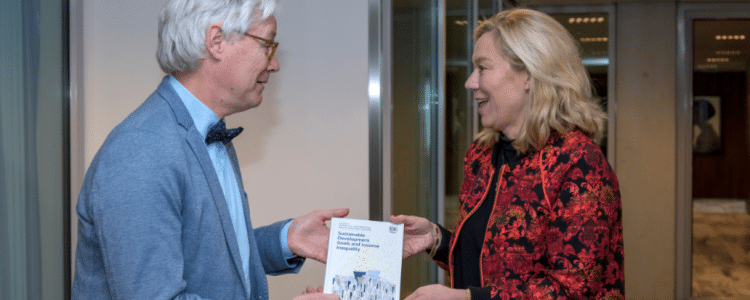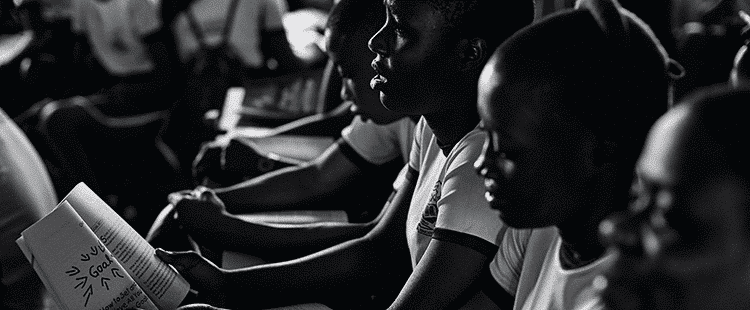
Growing income inequality warrants a strong response. In our recent book ‘Sustainable Development Goals and Income Inequality’, we argue that income inequality is insufficiently dealt with in the Sustainable Development Goals (SDGs), due to weak targets and failure to recognize the difference between income of all social classes, income from work and income from capital. This distinction should be given a lot more attention in the review and monitoring process for the SDGs, in addition to stronger inputs from civil society.
Growing and persistent income inequality is a subject of increasing importance in the economic, social and environmental systems of many countries. According to the World Inequality Report 2018, income inequality has increased globally in recent decades. This highlights the important role of governments in reducing inequality. One of the former major instruments of global governance and development, the Millennium Development Goals, did not consider inequality at all. This was a great omission in an era of increasing inequality.
One of the goals of the SDGs is to reduce inequality (Goal 10). Unfortunately, the target related to this goal is insufficient, as it relates only to progress of the bottom 40% of the population. This means that specific developments for both the poorest and richest parts of the population are not adequately taken into account. As a consequence, the SDGs do not pay sufficient attention to income inequality. This is largely due to lack of a sensible indicator to attest to the cleavages between the income from work, the income from capital, the income of the super-rich (the top 1%), and the average income of the general population. These cleavages are more visible in emerging and developed countries. It is important to pay attention to the behaviour of the rich, as ignoring their domination will put the social fabric of a country under strain. This has been observed in some developing countries in Latin America, Asia and Africa, as well as in many developed countries. Hence, this lack of attention to income inequality is considered a weakness of the SDGs, as inequality co-determines the success and failure of many of the SDG targets. Indeed, the strongest hubs of interconnectivity in the network of SDG goals and targets are in relation to ‘inequality, poverty, and growth and employment’.
In Sustainable Development Goals and Income Inequality (2017), we argue that the economic debate in policy institutions and global fora should not be based only on gross domestic product (GDP) and traditional economic measures. Instead, alternative measures of development should be included, such as the Human Development Index (HDI) and the Green Economy Progress (GEP). Furthermore, special attention should be paid to the Palma Ratio, which measures the income of the bottom 40% of the population in relation to the top 10% of the population. This can be used as an inequality measure, rather than the previously opted for Gini ratio, as it represents an indicator of inequality that is less sensitive to change in the relatively stable middle 50% of households. Despite the fact that this ratio was not mentioned in the final formulation of the SDGs, the contributors argue that this ratio ought to be part of national reviews on progress towards the SDGs.
Sustainable Development Goals and Income Inequality proposes innovative ideas that may strengthen the SDG approach. These ideas include new and improved measures of inequality (such as the Palma Ratio), new evidence-based policies, and the increased involvement of civil society. For example, through the active involvement of civil society, governments in the Global North and the Global South and the United Nations can be called upon to pay more attention to growing national and international income inequalities and demand the inclusion of measures that go beyond the current vaguely formulated goals and targets. Academics and members of civil society are important actors, who could play a role in putting income inequality on the policy agenda as such. As a result of improving the SDG approach, the SDGs could form the basis of a global social contract for an effective development partnership. In such a global social contract, two elements are of importance: the right to development and the so-called ‘global social floor’. Especially economic, social and cultural rights, and the basic elements thereof (non-discrimination, participation and accountability), need to be considered. This is financially possible provided that the international financial system is reformed.
Sustainable Development Goals and Income Inequality is not a panacea for tackling all income inequality problems, however, it coherently brings together the pieces of the puzzle. Most importantly, it emphasizes that the SDGs offer an opportunity to strengthen the coherence between socially, economically and environmentally sustainable policies at the national and international levels.




